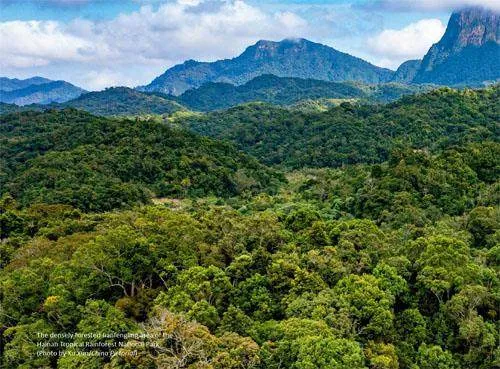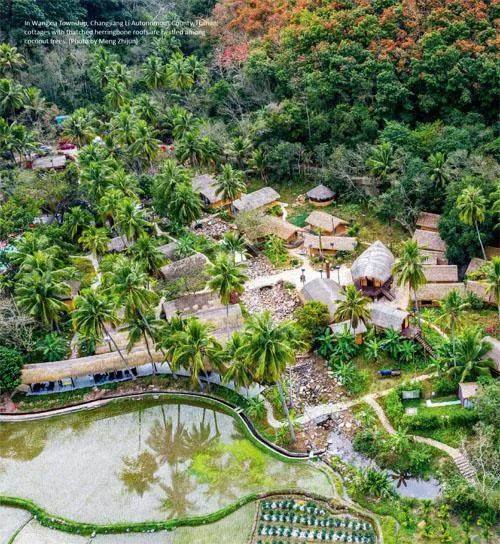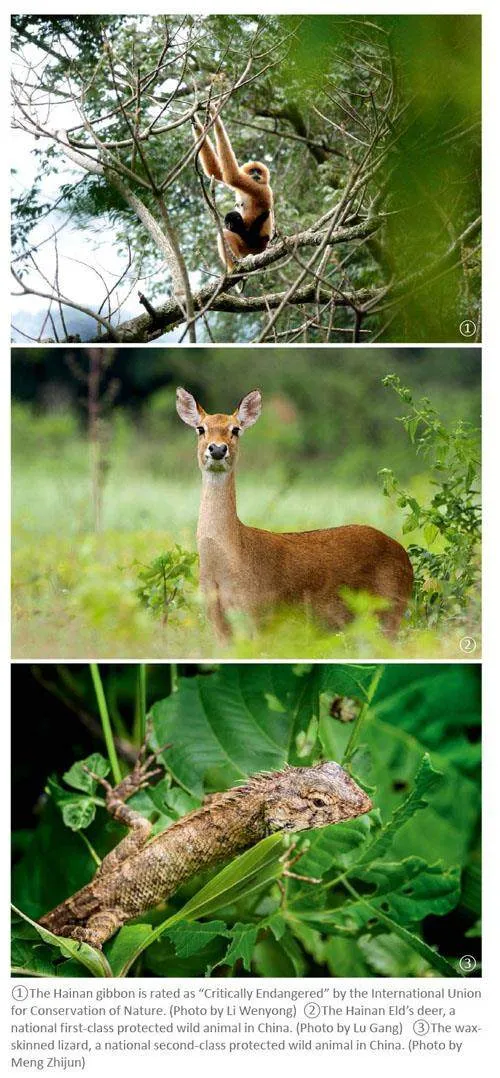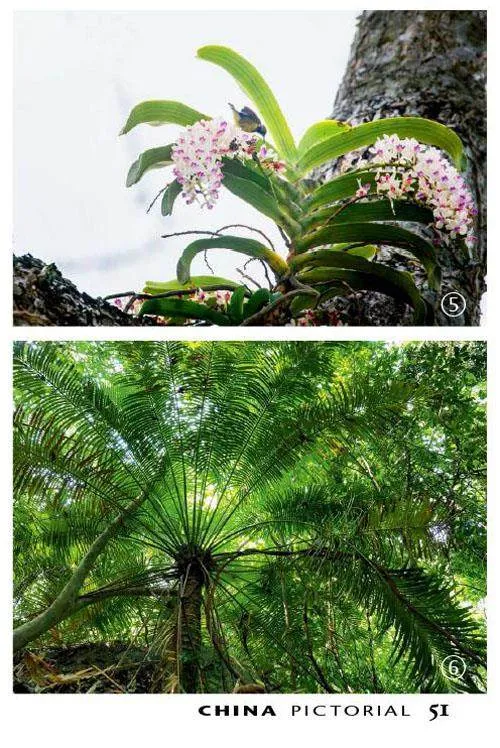A Model for Tropical Rainforest Protection




As one of 34 globalbiodiversity hotspots,Hainan Province’stropical rainforestis the most concentrated andbest-preserved continental islandtypetropical rainforest in China. It ishome to unique species of flora andfauna and a gene pool that is uniquein China and even the world. Itserves as a treasure trove of tropicalbiodiversity and genetic resources.The establishment of the HainanTropical Rainforest National Park isnot only an effective way to protectthe authenticity and integrity of thetropical rainforest ecosystem butalso an urgent necessity to save rareand endangered wild fauna and floraresources.
Due to the continuousexpansion of human activitiesand overdevelopment, tropicalrainforests around the world,including those in Hainan, havebeen rapidly shrinking over the pastcentury. Since the 1950s and 1960s,Hainan has successively establisheddozens of nature reserves of variouslevels and types, such as Jianfenglingand Yinggeling, which haveprotected and restored Hainan’stropical rainforest ecosystem to acertain extent.
Commencement of the HainanTropical Rainforest National Parkpilot program in 2019 broughtsystematic and comprehensiveconservation to the authenticity,integrity, and biodiversity of thelocal tropical rainforest ecosystem.By integrating 20 nature reserves,establishing ecological corridors,and implementing ecologicalrelocation plans to ensure sufficientliving space for rainforest species,the biodiversity, stability, andsustainability of the ecosystem inthe Hainan Tropical RainforestNational Park have steadilyimproved. Research shows thatthe park currently has over 4,000species of higher plants and nearly700 species of wild vertebrates.Since 2019, at least 54 new specieshave been discovered within thenational park. Additionally, rareand endangered endemic speciessuch as the round-nosed giant lizardand the spiny reed frog, which hadnot been seen for many years, havereappeared in the rainforest.
The flagship species of Hainan’stropical rainforest, the Hainangibbon has been an importanttarget of the national park’sbiodiversity conservation efforts.The Hainan gibbon is one of themost endangered gibbon speciesin the world, with fewer than 10individuals surviving in the 1970sand 1980s. For half a century,efforts to protect the Hainan gibbonhave never ceased, especially sincethe official establishment of thenational park in 2021. A seriesof conservation measures havebeen implemented for the Hainangibbon such as restoration andreconstruction of over 330 hectaresof habitats, planting of more than300,000 trees favored by the species,constructing aerial ecologicalcorridors, and training dedicatedmonitoring teams to use infraredcameras to conduct round-the-clocktracking and surveillance of Hainangibbon populations. As of the endof 2022, Hainan gibbons in the wildhad increased to six groups with atotal of 37 individuals, showing asound and steady growth trend.
In 2019, the Hainan Instituteof National Parks was establishedwith an aim to unite internationaland domestic forces to exploreways to recover the populationof Hainan gibbons. In July 2023,the first Meeting of Partners ofthe Global Gibbon Network washeld in Haikou, capital city ofHainan Province, at which nearly120 experts and scholars from 10countries and regions such as China,the United States, and the UnitedKingdom gathered to discuss along-term mechanism for protectinggibbons.
“Conservation of the Hainangibbon is a long-term task, andwe hope that more people willparticipate in the promotion andconservation of this endangeredand rare species as we work tofind a truly global solution for theprotection of the gibbons,” said TangYanfei, executive director of theHainan Institute of National Parks.
During construction of thenational park, the concept ofecological protection tends to takeroot in people’s hearts, guiding localproduction and lifestyles towardsgreen, low-carbon, and sustainabletransformation.
Maona Village, located at thefoot of Wuzhi Mountain, Hainan’shighest peak, is a Li ethnic villageembraced by tropical rainforests.With a low latitude, a highaltitude, and slightly acidic soil, itis a production area for a specialhigh-mountain tropical rainforesttea. The ecological cultivation andtraditional production techniquesendow the local tea with a uniqueflavor and charm. “Over the pastyear, the revenues of our tea shophave doubled to over 60,000 yuan(US$8,280),” said Wang Juru, theowner of Ru Tea Shop in the village.The picturesque Maona Villagehas also attracted a snowballingflow of tourists. Upon enteringthe village, visitors can admire theLi ethnic group’s characteristicboat-shaped bamboo houses as wellas exquisite Li brocade embroideryon tube skirts, garments, andheadwear, all handcrafted by Liwomen. Nowadays, hospitalityindustries such as tea shops, culturaland creative products, and folkperformances are flourishing,making the village an increasinglyattractive destination.
According to the Master Planfor the Hainan Tropical RainforestNational Park published in 2023,by 2030, the management systemof the national park will be moresound, the operating mechanismwill be more efficient, and thesupport and guarantee system willbe improved. “Forests are reservoirsof water, food, income, and aboveall, carbon sinks,” said the directorof the Administrative Bureau of theHainan Tropical Rainforest NationalPark. “We will adhere to ecologicalpriorities and green development,and promote ecological protectionwhile advancing communitydevelopment.”

